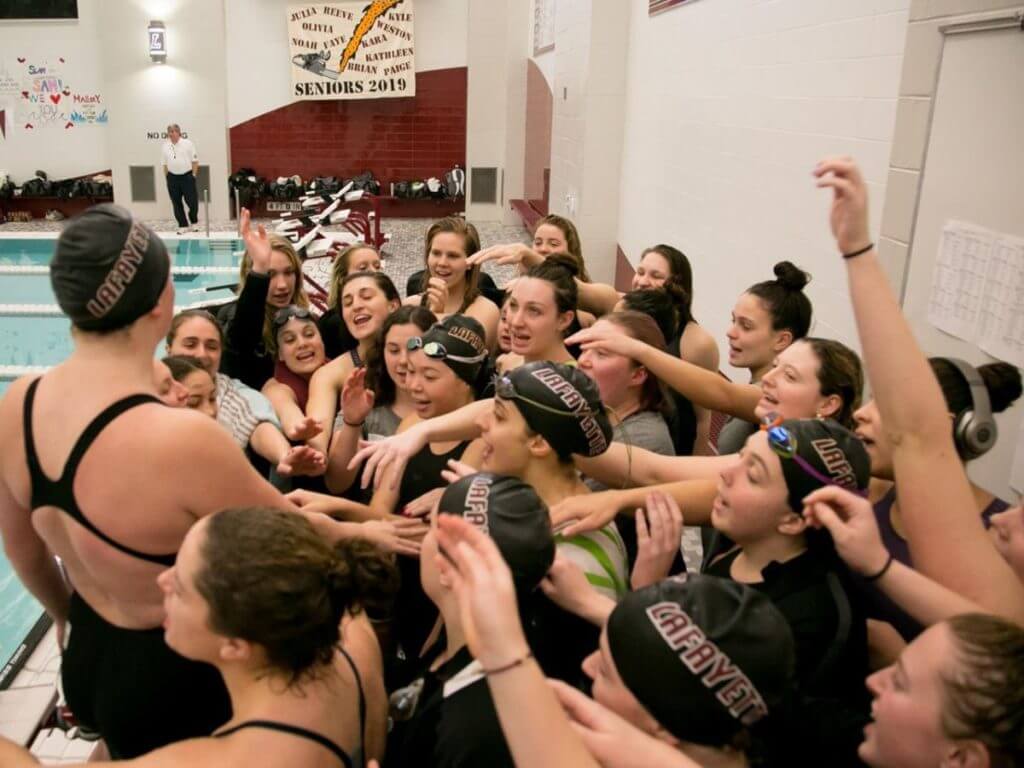Getting the College Recruiting Process Started: Some Early Steps

Getting the College Recruiting Process Started: Some Early Steps
Choosing which college to attend can be overwhelming, especially as a student-athlete. If you are a junior in high school, this might be the right article for you to look at.
Every type of question crosses the mind of those who want to pursue a degree while swimming. The recruiting process might sound overwhelming. However, with time and awareness, it gets exciting, too.
Although choosing a university to study and swim for can be challenging, there are multiple ways to approach this process. Choosing a college will determine the four years after high school. Therefore, there are ways to get ahead of the game when entering the swimming pre-recruiting process.
In an interview with Swimming World, Rick Pain, owner of American College Connection, a company which helps student-athletes find the right fit between academics and swimming, shares some of the secrets that aid swimmers in finding the right fit for them.
When is the right moment to start the recruitment process?
“Freshman year is the time to start, but it depends on two things,” Rick Pain said. “Is the swimmer passionate about the sport, or is there a worry about them burning out, and are their times fast enough to make a difference.”
Identify Universities
The first task is to identify what universities offer, what you want to study, or what you think you might want to study. Deciding on a major can be complex for a high school student. Nonetheless, having an idea of what you want to lean into can be helpful for you in finding the right university.
Sophomore Year
The end of sophomore year is crucial for those who want to attend a D-I or D-II school. Coaches can start contacting the recruits on June 15 after their sophomore year. Being on top of their recruit list as a sophomore is essential.
“The longer you wait (to be in contact), the lower on the list you go and the more recruits you have to wade through to get to the top,” Rick Pain said.
Chase College Coaches
Coaches receive hundreds of emails from different recruits trying to swim for them. Therefore, it might take a while for coaches to respond quickly. Sometimes, recruits think a coach might not be interested if they do not get a quick response. However, recruits must continue to contact coaches until they get a response.
Sell your potential
Most college coaches base their offers on a swimmer’s potential. Coaches like to think that any swimmer they bring in will get faster and help the team grow based on their potential. Therefore, learning how to sell your potential might make a difference.
The first step to selling your potential is to develop specific goals for your current season. Then, you will need to let college coaches know those particular goals. Those goals have to be believable and within a frame of time. You need to let college coaches understand what you will do to make a difference and improve.
Pain shares a sample conversation between a swimmer and a college coach on how to sell his/her potential:
Swimmer: Coach, it seems like you and the team reached most of the goals for the season.
Coach: Yes, we had a really good year. The kids trained well and we hit 82% of our goals.
Swimmer: Congratulations. My coach and I got together the other day and set my goals for the season. Would you like to hear them?
Coach: Of course.
Swimmer: I will go a :59.9 or faster in my 100 freestyle by August 5. I know I can at least swim that fast because I am doing dryland three days a week instead of two and I know I am getting stronger and that will really help me take my first 50 out in :28.5.
I will also be able to kick 5 x 100 free on a 1:30 interval by July 15. With my legs in better shape I will be able to bring it home in at least :31.7
What you just did is make this coach look at you as a :59 100 freestyler instead of a 1:02.
That’s selling your potential.
International Students
Thousands of international students want to come to study and swim in the U.S. every year. Swimmers from non-English speaking countries have to pass the TOEFL exam. Moreover, they face the challenge of standardized exams such as the ACT and SAT. The hardest part of recruiting for these students is the exposure to coaches and financial aid.
Some international students come to the U.S. with the expectation to keep representing their country. However, some college coaches do not fully support that idea, making it harder for international students to decide. On the other hand, there are college coaches who fully support the idea of working with swimmers who have global aspirations and are fully supportive.
“The key is finding that right coach,” Pain said. “After 22 years of college swimming recruiting, I have found that most swimmers make their final decision on a school based on which coach(es) they felt the closest bond with.”



